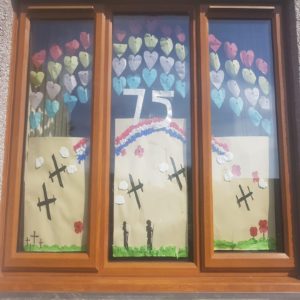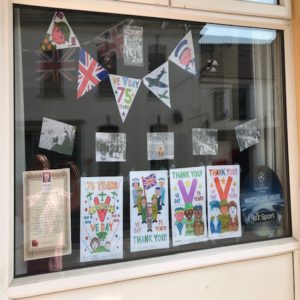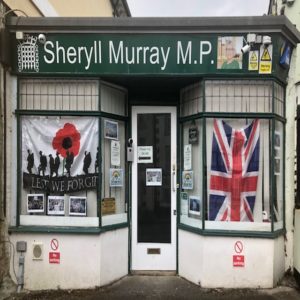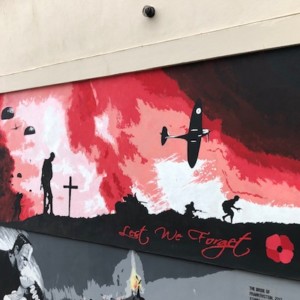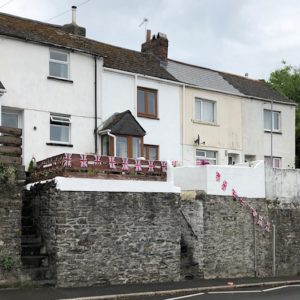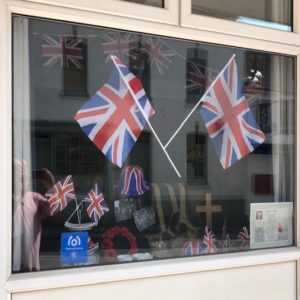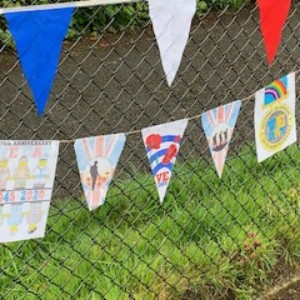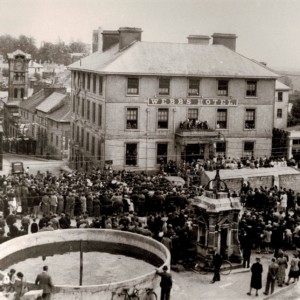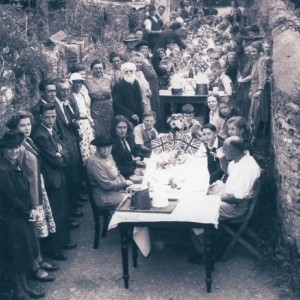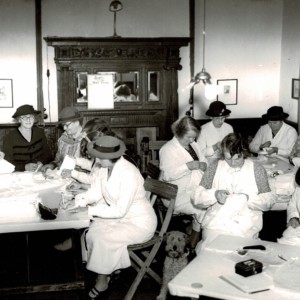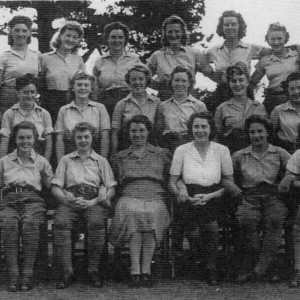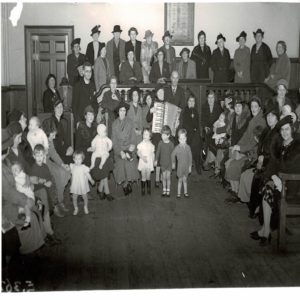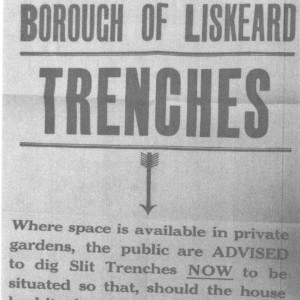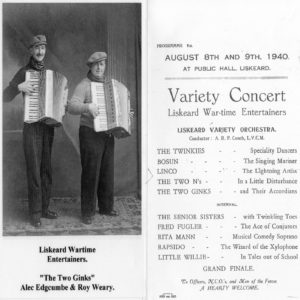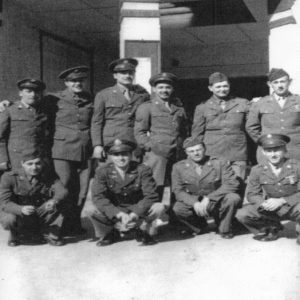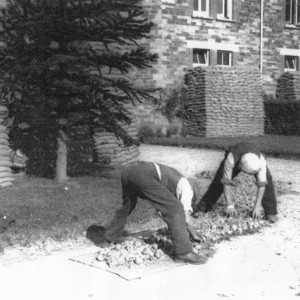Liskeard Marks VE 75 – 8th May 2020
The large-scale plans to commemorate the 75th anniversary of VE Day had to be postponed because of the need for social distancing due to the Coronavirus pandemic, but Liskeard was still able to pay tribute.
In the days running up to the anniversary the Town Council shared memories from the war in Liskeard and ideas for marking the day at home.
On 8th May at 11am a small group came together to say aloud the Ode to Remembrance, observe the two minute silence and lay a wreath on the town’s war memorial. They were Mayor, Rachel Brooks; her consort, Rod Sheaff; Deputy Mayor, Sandra Mitchell; Councillor Simon Cassidy, and President of the Royal British Legion, Christine Henwood.
The Mayor then gave a short speech, see the video below.
The Town Crier gave the ‘Cry for Peace’ at 6.55pm along with Town Criers across the country. Due to lockdown regulations he did this in his own garden and the video was shared on the Town Council social media.
A lone bugler, Steve Ayres, playing The Last Post in the entrance of Webbs House at 3pm on VE Day 75. Due to the coronavirus restrictions no one was there except his friend and her dog. There were one or two passers by, of which one lady commented and expressed her joy. Some cars slowed down.
Liskeard Celebrates
Much of the town got into the spirit of the day with decorations and window displays to commemorate the occasion.
Wartime Liskeard
Many thanks to Liskeard & District Museum for these wartime photographs from their collection which were shared on social media in the run up to the VE Day 75 celebrations and really gave a feel for what the town was like during wartime.
Soon after the announcement of the end of the war in Europe, the Mayor of Liskeard Mr W H H Huddy and other dignitaries gathered on the balcony of Webb’s Hotel on 8th May 1945.
After a moving speech from the Mayor the bells of St Martin’s Church rang out, Liskeard Silver Band played patriotic tunes, the crowd sang the National Anthem then dispersed to enjoy their own celebration parties.
Note the water tank in the photo, there were several of these around the town during the war for use by the fire brigade in an emergency.
After gathering on The Parade to listen to Mayor Huddy’s speech and enjoy the celebratory music and singing, the people of Liskeard sat down to one of the many Street Parties taking place on 8th May 1945, such as this one organised by the residents of Manley Terrace, Station Road.
One of the positives to come from the current lockdown situation is how the community have come together to do what they can to support each other and you may be interested in this photo from WWII which shows that Liskeard has always had a fantastic community spirit.
This is a volunteer group that was set up to make various items in short supply in local hospitals. They were called “Liskeard Hospital Supplies” and a sub depot was set up in Hollywood, the grand house in Barn Street. The ladies in the photo are in Hollywood busy making essential supplies during WWII.
During WWII this group of Land Army Girls were based at Pencubitt House, Lamellion Hill. They helped on local farms replacing the men who were serving in the Armed Forces. In the 1944 Liskeard Carnival their float named “Grow More Food” was awarded first prize.
During WWII Liskeard welcomed many evacuee children mainly from London and Plymouth, both being major targets for enemy bombs.
The 2018 issue of “The Evacuee” magazine featured the “lovely times” recalled by 3 sisters who stayed with Mrs Rickard of Pike Street from 1940 to 1943. The photo was taken at the opening of the Evacuee Centre in the Guildhall, where the children were taken after arriving by train, to discover whose home they would share for the next few years. Mrs Rickard generously accepted 12 children into her home in addition to her own child; she referred to them affectionally as her “Baker’s Dozen”.
The Air Raid Shelter outside Webb’s Hotel in the photo taken on VE Day was the only public one in Liskeard, accommodating just 50 people.
The Council recommended that those with gardens should construct a Slit Trench with plans available from their offices in Barras Street. These trenches were 4′ 6” deep, 2′ 6” wide and 6′ 6” long. Two people could sit in this underground trench and one wonders if any still exist today in the gardens of Liskeard.
The spirits the general public, the volunteers and locally based servicemen were raised by the huge reserves of Liskeard artistic talent.
Dancers, singers and players were among the acts performing in the Public Hall and other venues throughout the war years. For evacuees and local children alike the highlight of the year was the Christmas pantomime performed the Gladilova School of Dance.
These US troops outside the Carlton Cinema on the Parade suffered no shortage of food in their billets at Luxstowe.
It was a different story for the residents of Liskeard for whom rationing continued until the 1950s. Some examples of the weekly ration per person were Bacon & Ham-4oz, Tea-2oz, Butter-2oz, Cheese-1oz and Meat to the value of 1s 10d.
This photo taken at Lamellion Infirmary, Station Road shows two aspects of life in Liskeard during WWII. Buildings with occupants who would be difficult to move to safety during an air-raid had sand bags stacked against their walls to give some protection from enemy bombs.
In the “Grow More Food” campaign residents were encouraged to convert their lawns to vegetable plots. This included the grounds of the infirmary and two of the more able bodied residents are seen here sorting their onions.
The Master’s Report Book for VE Day stated: Patients had a very enjoyable day. Beer and minerals and extra fair were provided throughout the day. A bonfire was lit during the evening and patients sang and danced on the lawn.


